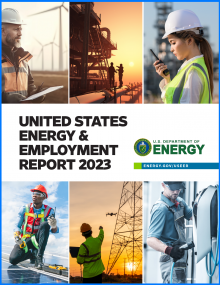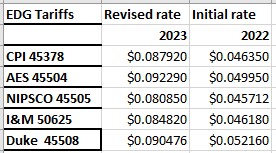FOR IMMEDIATE RELEASE: October 15, 2024
Contacts: Kerwin Olson, Executive Director, (317) 735-7727, kolson@citact.org
Ben Inskeep, Program Director, (317) 735-7741, binskeep@citact.org
CAC Calls for Data Center Moratorium
Task Force on New “Hyperscaler” Data Centers Needed to Address Enormous Costs and Risks
-Call for Moratorium Informed by Shocking Findings in CAC Testimony Filed at IURC-
INDIANAPOLIS – Citizens Action Coalition (“CAC”) calls on the Indiana General Assembly to enact a moratorium on new “hyperscaler” data centers used to power artificial intelligence and commence a task force to study what policies should be adopted prior to lifting the moratorium.
“Hoosiers must be fully protected from the rapacious resource needs, massive tax subsidies, and extraordinary utility cost burden associated with these facilities that could lead to skyrocketing utility bills across Indiana,” said Kerwin Olson, CAC’s Executive Director. Each hyperscaler data center could receive billionsof dollars in subsidies associated with the state sales tax exemption for data centers, among other subsidies, calling into question the fiscal sustainability of this Indiana policy that was enacted years ago and before the dramatic rise in hyperscaler data centers needed to power AI.
CAC also filed testimony today at the Indiana Utility Regulatory Commission (“IURC”) calling on the IURC to adopt Indiana Michigan Power Company’s (“I&M”) proposed constructive changes to its tariff applicable to data centers, as well as implement additional consumer protections. The I&M tariff case is docketed before the IURC as Cause No. 46097.
“Hyperscaler data centers are the single biggest threat to affordability, reliability, and environmental sustainability in Indiana this decade,” said Ben Inskeep, CAC Program Director, who sponsored CAC’s testimony. “We need to press pause on new data centers that pose enormous risks and develop policies that protect Hoosiers instead of throwing away billions in subsidies to Big Tech companies already worth trillions of dollars.”
CAC’s shocking findings about the extreme and unprecedented wasteful electric consumption of hyperscaler data centers coming to northern Indiana this decade include:
- I&M is forecasting that its hyperscaler data centers will use more electricity by 2030 (35 million MWh per year) than all 6.8 million Hoosiers use in their homes today (31.9 million MWh per year).
- I&M is forecasting that a handful of new hyperscaler data centers, such as the Amazon and Google data center campuses announced this year, will lead to a tripling of I&M’s electric sales by 2030, with these facilities collectively using 6.7 times more electricity than all of I&M’s residential customers use today.
- A single 1,000 MW hyperscaler data center will use 52% more electricity than all of I&M’s 420,000 residential customers combined used in 2023.
CAC also found that hyperscaler data centers will provide exceptionally few jobs relative to their energy consumption compared to other economic development in Indiana and could even threaten future economic development by creating long and expensive delays for other businesses seeking to expand or open new operations in Indiana.
CAC’s testimony is available here and can also be found on the IURC website in Cause No. 46097.






